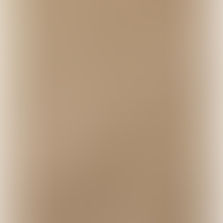Wool and benefits of Wool
Wool
Wool is the textile fiber obtained from sheep and certain other animals, including cashmere from goats, mohair from goats, qiviut from muskoxen, angora from rabbits, and other types of wool from camelids.
Wool has several qualities that distinguish it from hair or fur: it is crimped, it is elastic, and it grows in staples
Wool can mixes with polyester and nylon for durability.wool from goat family in high mountain ,like cashmir and alpaca because it softness and warmth are more expensive.

wool is anti -static wool is durable wool are water repellent wool are resists staining wool absorb oder superb handle and drape wool are breathable wool is good sound proof wool absorb wet and water and moisture
and
wool are Natural
wool fabric are Biodegradable
wool fabric are Renewable
wool fabric are SOFT AND COMFORTABLE
wool fabric are Elastic
wool fabric are Breathable
wool fabric are Warm and cool
wool fabric are Static resistant
wool fabric are ASY TO CARE FOR
wool fabric are Machine washable
wool fabric are Stain resistant
wool fabric are Anti-wrinkle
wool fabric are Wrinkle Free fabric
Odour resistant
wool fabric are REASSURINGLY SAFE
wool fabric are Fire resistant
wool is fire resistant
wool fabric are UV resistance
EXCEPTIONALLY STYLISH
Stylish fabric with unique texture and finish
Sleek and elegant
Colourful
Fashionable
Easy to tailor
Permanent press
Innovative
HEALTH BENEFITS
Science is showing that – as well as being a natural, renewable and biodegradable fibre – wool bedding and sleepwear appear to promote a better night’s sleep, and fine wool knitwear can assist people that suffer from particular types of skin conditions.
Consistent with earlier science findings, the early results from a study undertaken by the University of Sydney, Australia, are showing that wool sleeping apparel and bedding increases total sleep time, promotes sleep onset and improves sleep efficiency.
In hot (29° Celsius) conditions, wearing wool sleepwear saw participants in the study sleep significantly longer, reflecting faster sleep onset and waking up less frequently. In both cold (17° Celsius) and neutral (22° Celsius) conditions, the combination of wool sleepwear and bedding saw participants have a more efficient sleep compared to when tested using non-wool sleepwear and bedding.
Learn more about the sleep benefits of wool.
Dye Wool Fabric
Types of Wool Fabric
Wool fabric comes in a variety of weights and textures, including wool velvet, sateen weave, and performance wool. With so many choices, many choose to use wool fabrics in an array of products.
Fabric Type
Examples
Pile Fabric
Wool velour
Wool velvet
Face yarn
Knitted Fabric
Double bar raschel
Performance wool
Worsted Fabric
Smooth finished worsted wool
Woven Fabric
Flat weave
Plain weave
Twill weave
Sateen weave
Double cloth
Purchasing un-dyed wool may be less expensive than purchasing pre-dyed wool is. Dyeing wool also allows you to create your own colors for whatever your needs are.
10 Steps to Dyeing Wool Fabric
You can dye wool fabrics in pleasing colors, which allows you to dye a just little wool or more if needed.
1. Select the Fabric
You can begin by finding a wool fabric that works for your project at hand. Fabric is available by the yard, by the bolt, or as remnants, and you can also dye neutrally-colored manufactured wool items, such as blankets or clothing.
2. Select a Color
You can dye wool fabric a single color, or you can dye several pieces of wool in different colors. Once you choose a color palette, seek dyes designed for wool dyeing and choose an acid dye specifically manufactured for dyeing natural fabrics, such as wool or silk. You can find these dyes in local craft stores, as well as online.
3. Gather Materials
In order to successfully dye wool, you must gather several materials, including wool,acid dye, Jet-Dry (which prepares the wool for dyeing), a large pot or tub, rubber gloves,tongs, protective clothing and surface coverings, vinegar, measuring cups and spoons, and non-iodized table salt.
4. Soak the Wool
After gathering materials, fill the pot with hot water and add three tablespoons of Jet-Dry. Add the wool to the pot and carefully squeeze the wool to ensure it is completely wet throughout the fabric. Then, allow it to soak for 30 minutes.
5. Heat the Water
Next, fill the large pot with water and 1 tablespoon of non-iodized salt, which helps to distribute the dye color evenly throughout the wool. Make sure to bring the pot to a simmer, not to a boil.
6. Mix the Dye
Follow the manufacturer’s instructions for mixing the dye, mixing the colors of dye as necessary to create the appropriate shade.
7. Dye the Wool
Add the dye to the pot and mix it. Then, add the soaked wool. Stir when adding, as well as occasionally throughout the dying process to create a deeper shade. Cover the pot and allow it to simmer for 30 minutes.
8. Set the Color
Uncover the pot and add 1/3 to 1/2 cup of white vinegar, which sets the color into the fabric. Stir the pot to distribute the vinegar evenly and cover it to allow it to simmer for an additional 30 minutes. This creates colorfast wool.
9. Finish Soaking and Rinse the Wool
Turn off the stove, leaving the pot colored to allow the wool to soak overnight. The next day, remove the wool from the pot and gently squeeze out any excess moisture. Put the wool in an empty washing machine and run the rinse and spin cycle.
10. Dry the Wool
Put the wool in the dryer with a fluffy towel and a fabric softener sheet on medium heat and tumble the wool until it dries. Finally, remove the wool from the dryer and use it or fold it to put away for later use.
wool






















Comentarios